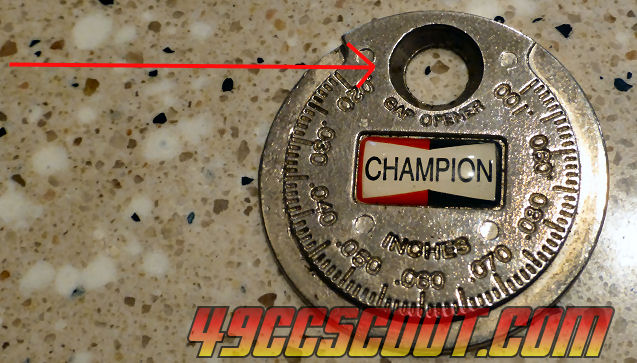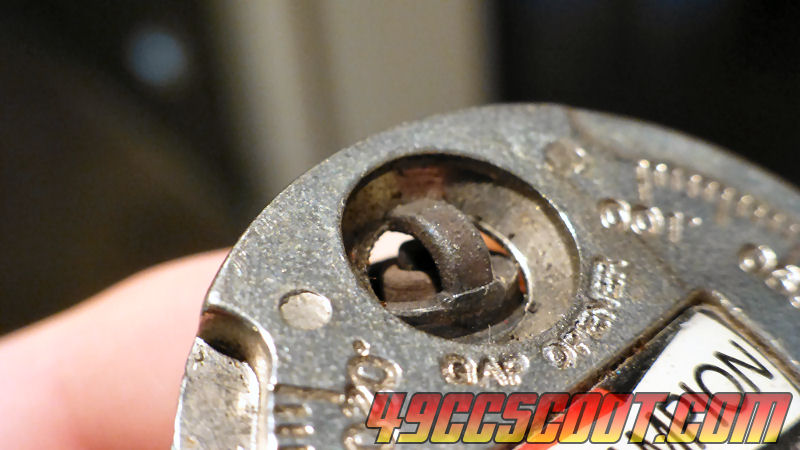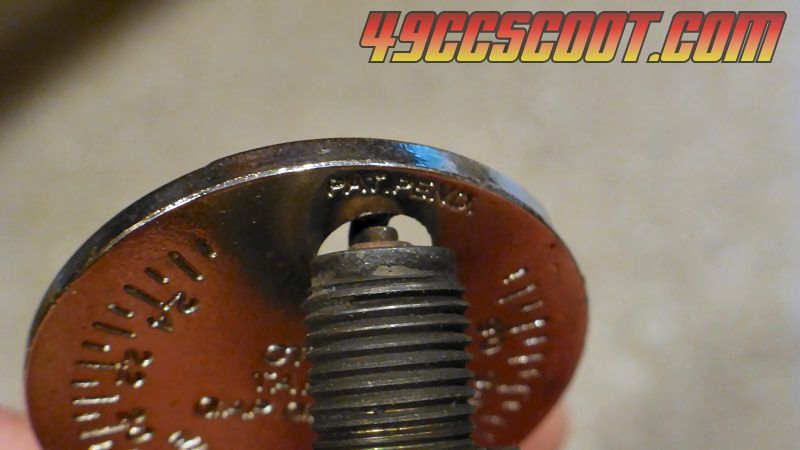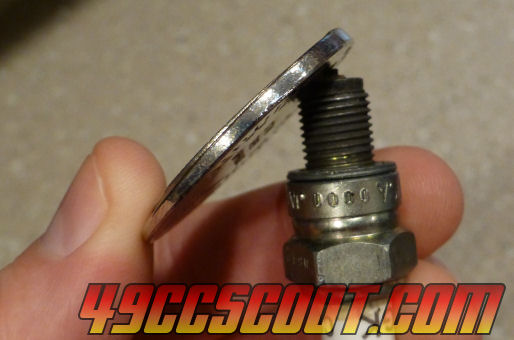Spark Plug Gapping And Other Info
Nov 26, 2014 13:05:50 GMT -5
kkzxxx, jhobe6678, and 1 more like this
Post by 90GTVert on Nov 26, 2014 13:05:50 GMT -5
I mostly gap my plugs to 0.026-0.028" for the Minarelli or 139QMB. Should be about there out of the box, but check. 0.030" is the most gap I recall using. Large gaps may make a larger spark, but can be too much for the ignition system, especially at high RPM. Setting the gap around 1/2 the recommended spec can help determine if the ignition system is causing problems. I usually set them down to around 0.014" for troubleshooting. If misfiring suddenly goes away with a small gap, most likely your ignition system is not up to par and you need to find the culprit.
Not checking the gap on cars was mentioned. I would suggest checking the gap on any plug you install, for car or scooter. Most of the time they're right, but stuff gets dropped or something is missed along the line here or there and it doesn't take long to check.
You can use the tapered or wire-style gap checkers or even feeler gauges. Wire or feeler gauges are probably most accurate and leave you less likely to damage thin electrodes like iridium plugs use.
I use the hole in a cheap round tapered style gap checker to open up the gap if it's too small.

Put the plug in there so the tip of the ground electrode is on one side of the hole and the other side of the hole rests against the base or threaded area of the plug as shown below.


Then pry gently and open the gap as needed.

You can get away with opening a gap by prying between the center electrode and ground strap on a conventional plug, but it's not a good idea and it can break or damage some plugs. Don't even think about gapping an iridium plug that way in a pinch. Tools like the one pictured above are on the counter at most parts stores for something like $1 last time I looked.
If the gap needs to be closed you can tap the ground electrode on a hard surface somewhat gently.
Not checking the gap on cars was mentioned. I would suggest checking the gap on any plug you install, for car or scooter. Most of the time they're right, but stuff gets dropped or something is missed along the line here or there and it doesn't take long to check.
You can use the tapered or wire-style gap checkers or even feeler gauges. Wire or feeler gauges are probably most accurate and leave you less likely to damage thin electrodes like iridium plugs use.
I use the hole in a cheap round tapered style gap checker to open up the gap if it's too small.

Put the plug in there so the tip of the ground electrode is on one side of the hole and the other side of the hole rests against the base or threaded area of the plug as shown below.
Then pry gently and open the gap as needed.

You can get away with opening a gap by prying between the center electrode and ground strap on a conventional plug, but it's not a good idea and it can break or damage some plugs. Don't even think about gapping an iridium plug that way in a pinch. Tools like the one pictured above are on the counter at most parts stores for something like $1 last time I looked.
If the gap needs to be closed you can tap the ground electrode on a hard surface somewhat gently.

